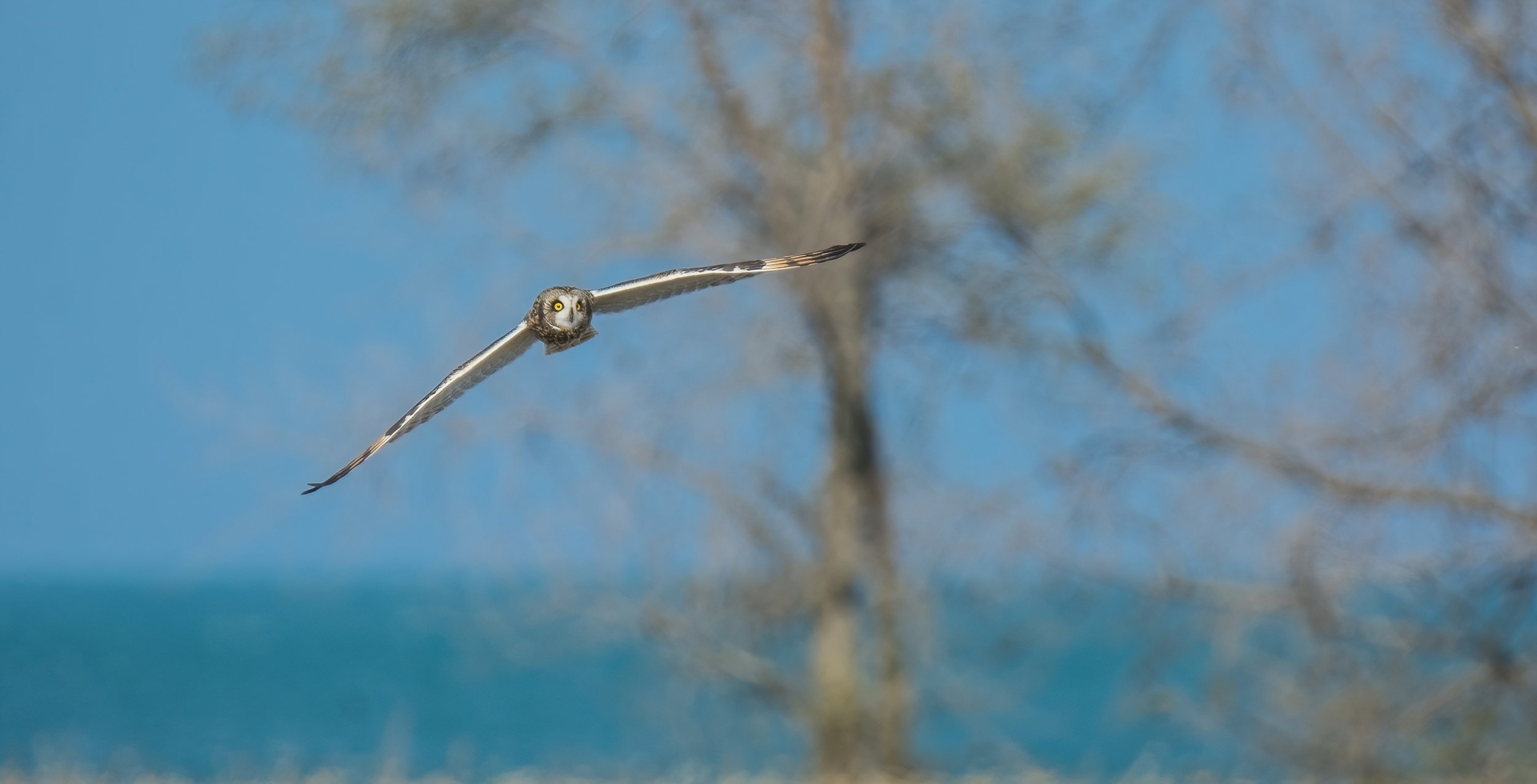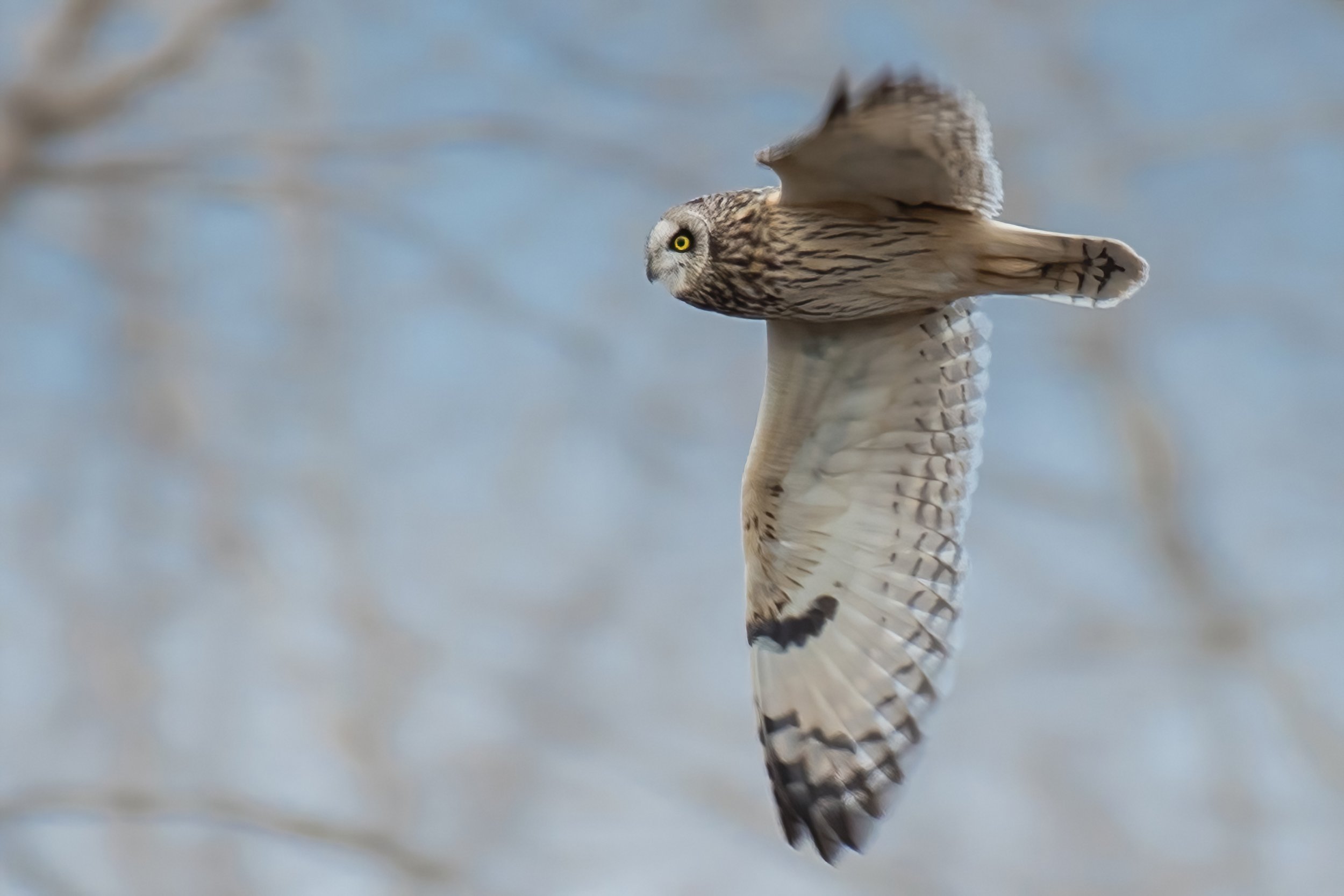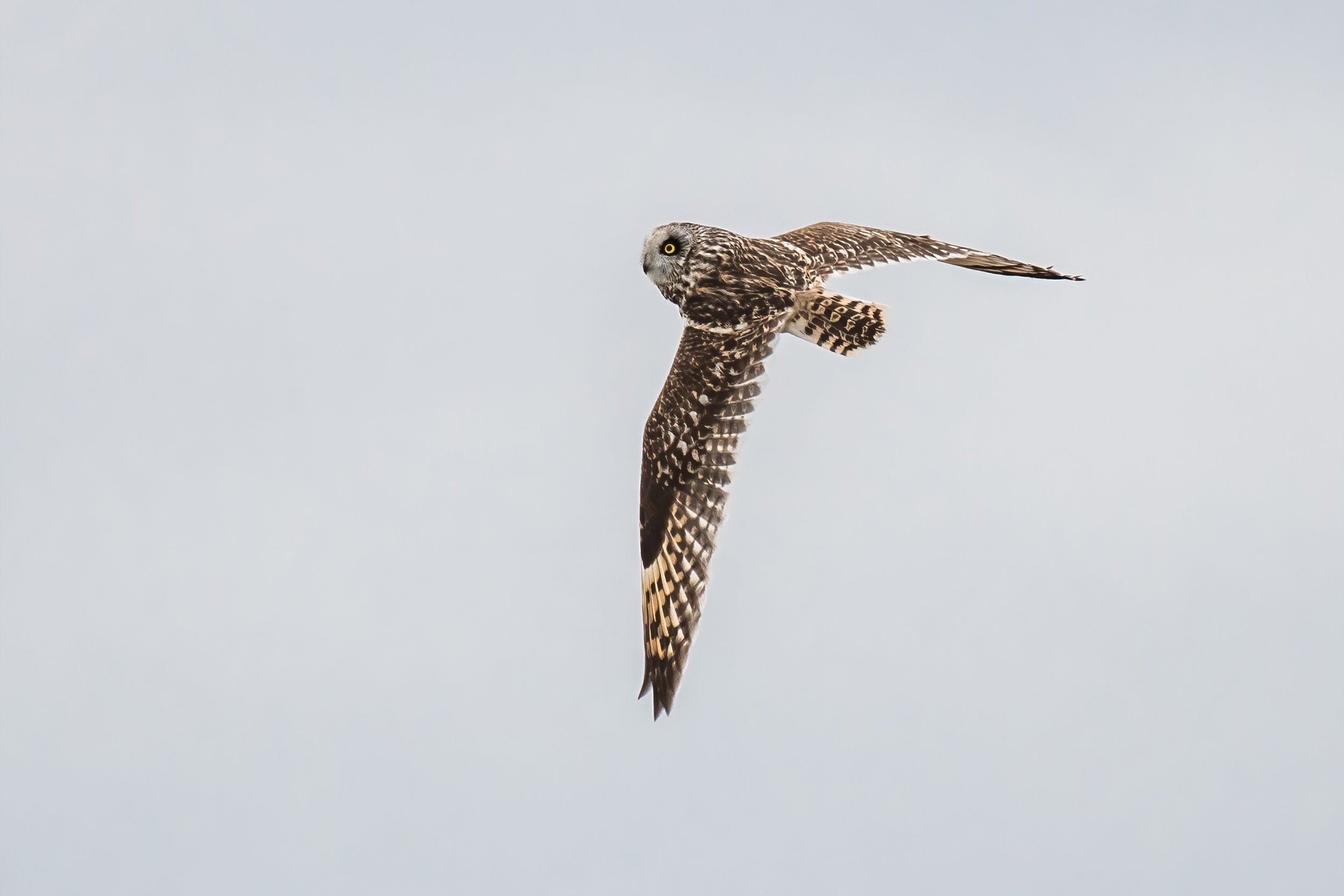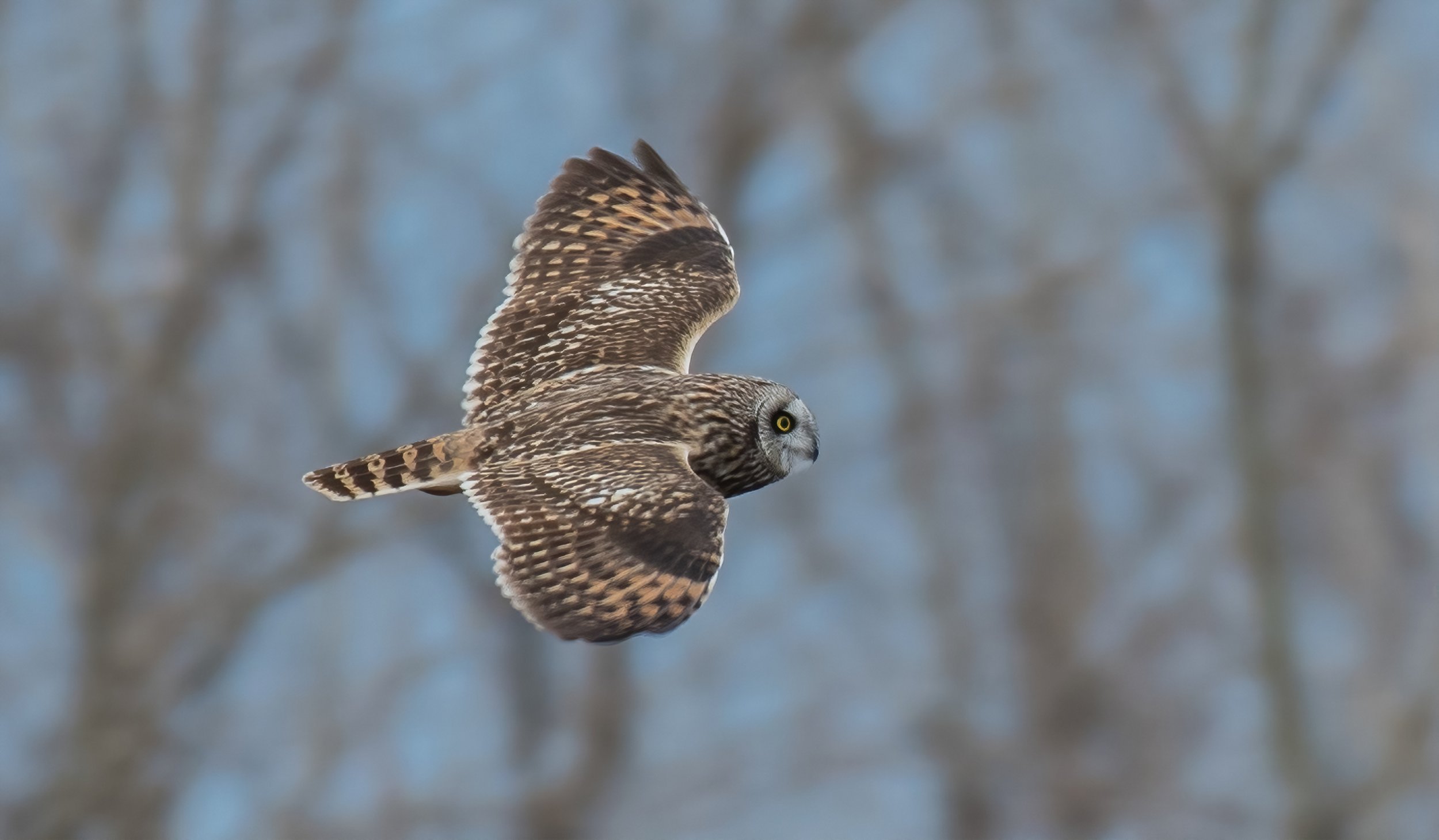Dan's Feathursday Feature: Short-eared Owl
On the Importance of Talking to Yourself
I enjoy the occasional chat with myself. Out loud. I’m not talking about those spontaneous expletives when hammer hits thumb, or the sweet nothings I whisper when someone cuts me off on the Dan Ryan. I’m talking full-blown monologue. There are times, when tackling a challenging woodworking project, for example, when my conversation with myself could rival the Gettysburg Address in length, if not eloquence. (Much of the time, I’m talking to the wood, not to myself, but let’s not nit-pick.)
Admit it. You talk to yourself, too. A thought only matures when it has gone full circle—conceived in that void between your ears, given birth as it passes through your vocal chords, and then set free to fly on its own when it enters the ether. Like the falling tree that makes no noise if no one is there to hear it, any good idea dies unheard, if it remains between the ears. Since few people can appreciate the wisdom of my musings, most of my thoughts are meant for my ears only.
I have found talking to myself a useful tool for birding. Wary birds don’t expect it.
When it comes to wary birds, the Short-eared Owl is near the top of the list. I see the Short-eared Owl often. It is a regular visitor to the southside Chicago park that I frequent. And what a beautiful bird it is. It has a short, plump body, stubby tail, flat, round face and bright yellow eyes that give it a perpetual look of surprise or confusion. What stand out the most are its wings and the way it uses them. They are broad and long. The wingspan of other owls common in the Midwest—like the Great Horned Owl, Barred Owl and Eastern Screech Owl—is typically about twice the length of their bodies. For the Short-eared Owl, add another 25%. Those extra-long wings give its flight a fluid, almost slow-motion, buoyancy. It never seems to be in a hurry, even when it is—like a giant Chimney Swift on Prozac.
Not at home in a dense forest or oak savannah, the Short-eared Owl prefers the wide open prairie and grasslands. Visit a prairie at dusk or early morning and look for it gliding slowly, silently, effortlessly, just above the top of the grasses, pulling up suddenly to dive-bomb a vole or a field mouse. I still remember the first time I saw one—actually there were three, floating like phantoms in the gathering dusk. As they flickered silently around us, the darkening prairie took on a mystical feel that made the hair on the back of my neck stand up.
If this ghostly image doesn’t appeal to you, don’t worry, you can see the Short-eared Owl at all hours of the day. Unlike other owls of the Midwest, the Short-eared Owl often hunts when the sun is high. The spooky phantom of the dusky twilight becomes jovial acrobat when seen in the bright light of day.
When it’s not flying, the Short-eared Owl rests on the ground, expertly concealed behind a clump of grass, or in a slight depression—right out in the middle of the field, practically impossible to find. It’s amazing how well this crow-sized bird can hide. I can count on one hand the number of times I have seen a Short-eared Owl stationary, not on the wing. And on every occasion but one, I found the owl on the ground or in a tree (very unusual) because I had seen it land there. Normally, as you come walking along, a hiding owl will sit tight and let you walk right on by, especially if it senses that you don’t know it’s there. More than once, a Short-eared Owl has waited until I approached—unawares—to within twenty feet before bursting forth in a flurry of feathers, airborne and fifty feet in the air before my heart returned from my throat to its rightful place.
That’s where talking to myself comes in. Here’s how it works. At the south end of my favorite prairie park, near a cluster of large grass-covered sand piles, I pause and mutter, “OK, Dan, slow down now, and look well. This is where you’ve often seen Sho….. Holy #%@&! There goes one!” At the sound of my voice, from an area that I had just scanned about fifty feet to my right, a Short-eared Owl erupts from the earth like a silent volcano. It heads toward the lake, then turns abruptly to come back and check me out before calmly working its way north along the lake. I am sure that bird would have been content to sit tight and let me continue on my way if I had not vocalized my thoughts.
On another occasion I was composing a poem. About an hour into my walk, I had an idea for a haiku. The second and third lines came pretty easily, but I was stuck on how to word the first line. (By now I had completely forgotten that birding was my “goal.” This happens often.) One first-line candidate struck me as good, so as I walked I said it out loud. Before I finished the fifth syllable a Short-eared Owl burst from the brush to my right and behind me, barely twenty feet away. Whether it was because it liked that line, or did not like that line, I’ll never know, but the owl was clearly not going to stick around to hear the rest of the poem.
This last example is my favorite. Mid-April I’m walking my favorite lakefront park—again—along the berm that hugs the lake. As I wade through the hip-high brown grasses remaining from last autumn, an American Bittern flushes from the grasses about thirty feet ahead. As I watch it fly out over the lake and turn south along the shore, I note that it was exactly this same spot and about the same day that I saw a bittern last year. I want to kick myself for not spotting it before it flushed. As it disappears over Steelworkers’ Park, I lower my binoculars, adjust my camera strap and say to myself, “Well, that was cool.” From a clump of grasses at the base of the berm, no more than ten feet from me, a Short-eared Owl shoots up and away from where it had been hiding all this time. Double cool!
You get the picture. Now, I’m not suggesting that you should walk the fields shouting at the top of your lungs to flush more birds. A conscientious birder’s goal is to see a bird before flushing it, and then proceed in a way that avoids making it feel it has to flee. But some birds—like the American Woodcock, Wilson’s Snipe, Ruffed Grouse, Short-eared Owl—are just such good hiders, the only way to avoid ever flushing them would be to never enter the prairie at all. I just want to say that if you occasionally partake in a bit of talking to yourself as you bird, be aware that this habit may help you uncover a hiding gem now and then.
Also know that it is not something that can be forced. Sometimes it happens that I’m having a bit of a slow day, not many birds showing themselves. So I decide to start talking to myself, to try to shake up some action. At times like this, I always find that I can’t think of anything to talk about. Like any refined art, talking to yourself is effective only when you do it without thinking.
Dan's Feathursday Feature is a regular contribution to the COS blog featuring the thoughts, insights and photography of Chicago birder, Dan Lory on birds of the Chicago region.






